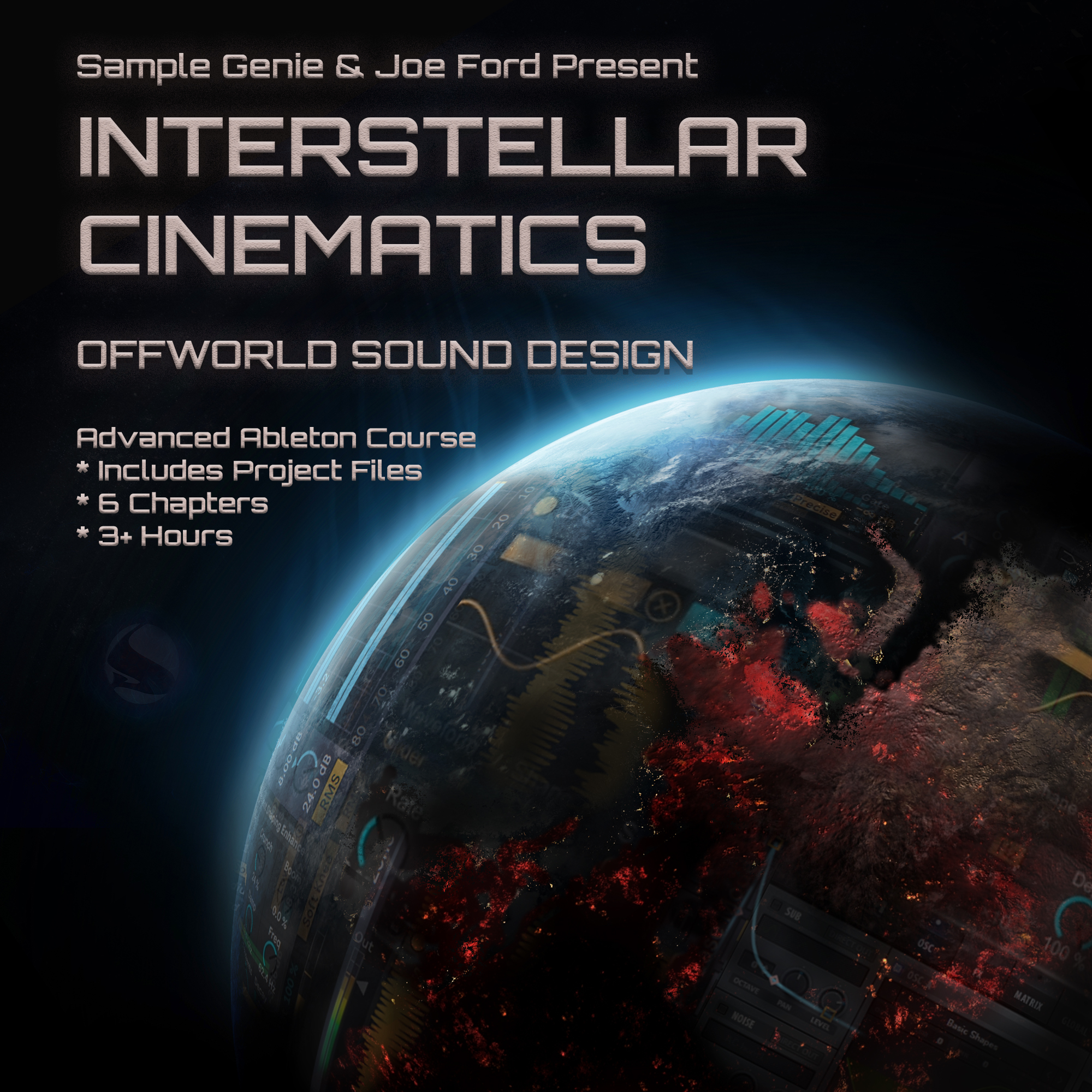Analysis of S1E04: FD – Bass Sequencing Tips
- This topic has 2 replies, 2 voices, and was last updated 6 years, 10 months ago by ,
 Harry.
Harry.
-
AuthorPosts
-
-
2017-08-29 at 22:41:05 #29083,
 HarryModerator
HarryModeratorWATCH NOTES
FD looks at his track “Break & Enter”, released on Metalheadz in 2012. States in the intro he mainly uses sampled basses. Likes making the sampled basses work to make a groove with the drums, finds drums and bass are the backbone of the track.https://www.youtube.com/watch?v=GL41oOnTkvg
DAW used: Logic 9 – this can be followed along in any DAW, though you may need to use different brand plug-ins for a few thingsTopics: bass, bassline, sound design, frequency splitting, bass modulation, sample tuning
03:30 – root note/key
• Determines the key he wanted to write in, starting with the sub bass
• Root note is D#05:30 – synth basses vs. sampled basses
• Makes a bassline using the sub, going for a “one note” approach
• Prefers using a synth for the sub, to be sure the sub bass is in the intended note/key
• Bass notes hit on and around the main kicks
• Sub is a simple patch made in Massive, but FD does split the output to three busses (low, mid & high)11:00 – “shadow bass”
• Sort of like a ghost note with drums, FD has a quick two note hit of an 808 bass, low frequency, done at the end of every two bars
• You do not want the basses to clash frequencies12:30 – using NI Battery as a sampler
• Explains the functions, describing how to use tuning and volume envelopes14:30 – 808 bass hit with saturation and a low pass filter on it
• “Weight & power, but not clashing”18:30 – discusses importance of distortion in making sounds “fat”
22:30 – “Intron” mid-range bass stab
• Used to add more character to the bass used
• Turns a long bass hit into more of a stab by turning down the decay parameter on the sampler30:00 – the next bass is looked at
• Another stab that comes in later in the track
• No low end, stab sits on top of a sub bass hit38:30 – the last mid-range bass
40:00 – the bass hook is examined
• Tuning of the sample
• These hits fall between the sub bass notes
• Actually made from processed snare samples52:00 – a bounce of the sub from Massive, processed with different FX
55:00 – FD stresses the use of envelopes to “make sounds fit” and modulation to get sounds moving in different ways
—–
THOUGHTS & QUESTIONS
• I think the main thing I took away from this is the importance of envelopes for making long sounds in to short sounds or stabs. Also, resonant filter settings seemed to come up a lot, from this video and the previous S1 videos.• Need to try being mindful of tuning of sounds, as feedback I’ve received in the past has been critical of sounds being out of key some times.
• Experiment with ways to give sounds movement, be it LFOs, steppers, performers, or envelopes.
• Experiment with turning non-bass sounds in to basses & stabs, a la the hook being made from Goldbaby 909 snare samples being saturated.
• What’s the different between a tremelo plug-in and an LFO tool? Is the tremelo just volume, and something like LFO Tool or the Cable Guys LFO plug-in a bit more customizable? Should test.
• Kind of unconventional how FD uses NI Battery as a sampler, but it gets the job he wants done. Example of knowing your tools and utilizing them differently then expected.
—–
Also, waiting to hear back from The Genies about ways we could catalog these tutorial reviews I’ve been doing. Maybe something on the site, or maybe somewhere else? Would do a forum post that linked to each, but I think you can only edit a post within a few minutes of the initial post, can’t go back & edit days/weeks/months later. I think the next analysis I do next week will be the most recent S5 video that comes out in a few days. No idea who it is or what it’s about."Knowledge kept is knowledge lost." - Bobbito Garcia
-
2017-09-04 at 00:19:56 #29322,
Sunken Forest
ParticipantBig up for doing these write ups Harry! It’s interesting to hear a different opinion on some of the processes involved.
I just wanted to mention something about the tremolo/LFO tool point. Tremolo effects are almost definitely amplitude shaping, just like the guitar pedals, and you tend to be able to shape the ‘LFO’ to a certain degree (adjust phase etc.). If you haven’t dabbled in LFO tool I would highly recommend it. Think of it like the LFO in Serum, which is essentially what it is. You can draw your own breakpoints, adjust curves; you can even modulate other parameters besides the amplitude (drive, cut off, resonance, pan).
I use it on Foley textures and percussion quite a bit, rather than side chaining. Kind of like Signal does with automation clips.
Something I want to try achieving with it is controlling Midi cc with it, but I don’t know if that’s possible in Ableton.
It’s really quite amazing.
Also check out Cableguys Volume Shaper for similar features 🙂
-
2017-09-05 at 14:54:12 #29363,
 HarryModerator
HarryModeratorThanks man! And thank you for the take on tremolo vs. LFO Tool and Volume Shaper. Got the LFO Tool demo, just haven’t tested it much. Have heard from a couple friends that it’s very similar to Serum, and they wish Serum had incorporated some more from LFO Tool, specifically the issue of of no phase rotation on the LFOs in Serum, but LFO Tool has it.
"Knowledge kept is knowledge lost." - Bobbito Garcia
-
-
-
AuthorPosts
- You must be logged in to reply to this topic.


